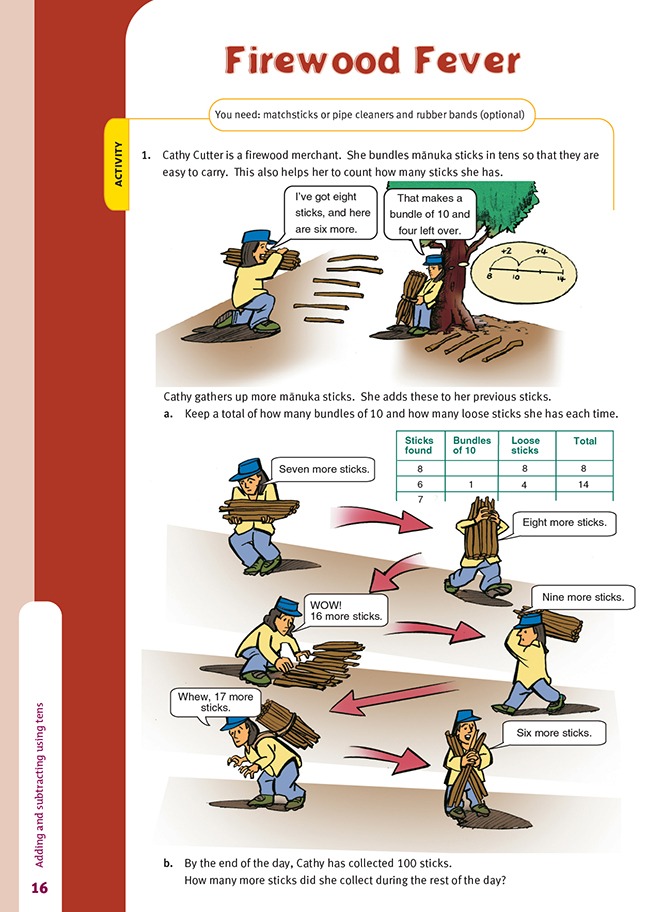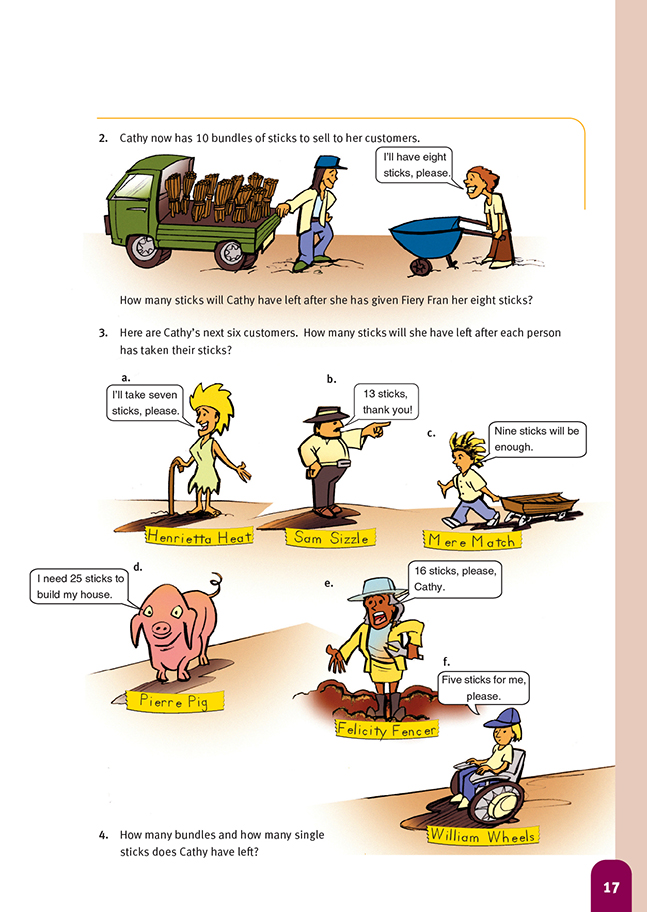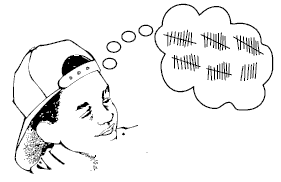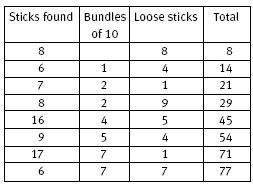This is a level 2 number link activity from the Figure It Out series. It relates to Stage 5 of the Number Framework.
A PDF of the student activity is included.
Click on the image to enlarge it. Click again to close. Download PDF (262 KB)
use mental strategies (through tens) to solve addition and subtraction problems
FIO, Link, Number, Book One, Firewood Fever, pages 16-17
Matchsticks or pipe cleaners and rubber bands (optional)
Year 7–8 students are likely to relate better to the firewood context of this activity than to being asked to make bundles of 10 with ice cream sticks and rubber bands as they probably were in earlier years, though the underlying mathematical idea is exactly the same. The students need to see the oneness of a bundle of 10 and use this to help solve addition and subtraction problems.
Draw attention to Cathy’s style of recording (number line jumps) as shown in her first two thought bubbles. These demonstrate how she used her knowledge of number relationships, rather than counting, to solve the problem. Encourage your students to find their own ways of using number relationships to do the cumulative additions. They could also record their thinking using Cathy’s model.
Allow the students to add the tens before the ones if they want to, as this is a valid strategy. It also shows that they have a thorough understanding of the relationship between tens and ones.
Note that Cathy’s truck holds 10 bundles of 10, which is 100 sticks. You can extend this to three-digit quantities using a visual model of trucks, bundles, and sticks. For example, 347 sticks will produce three truckloads, four bundles, and seven loose sticks.
For students who need more help to see 10 or 100 as a unit, relate the firewood groupings to the groupings of the cubes, rods, and squares in place value blocks.
Encourage the students to develop mental images of two- or three-digit quantities, using firewood or other models, and then have them show these images in drawings as well as numbers.
Challenge the students to find things around their homes that are packed in tens. For example, they might find a packet of chocolate marshmallow biscuits that holds 10 biscuits. The students can then make up and solve problems based on contexts involving those materials, for example: “Room One took eight packets of chocolate marshmallow biscuits to camp. By day 2, there were only three full packets and one opened packet with six left in it. How many biscuits had been eaten?”
Answers to Activity
1. a.
b. 23
2. 92
3. a. 85
b. 72
c. 63
d. 38
e. 22
f. 17
4. One bundle and seven single sticks



